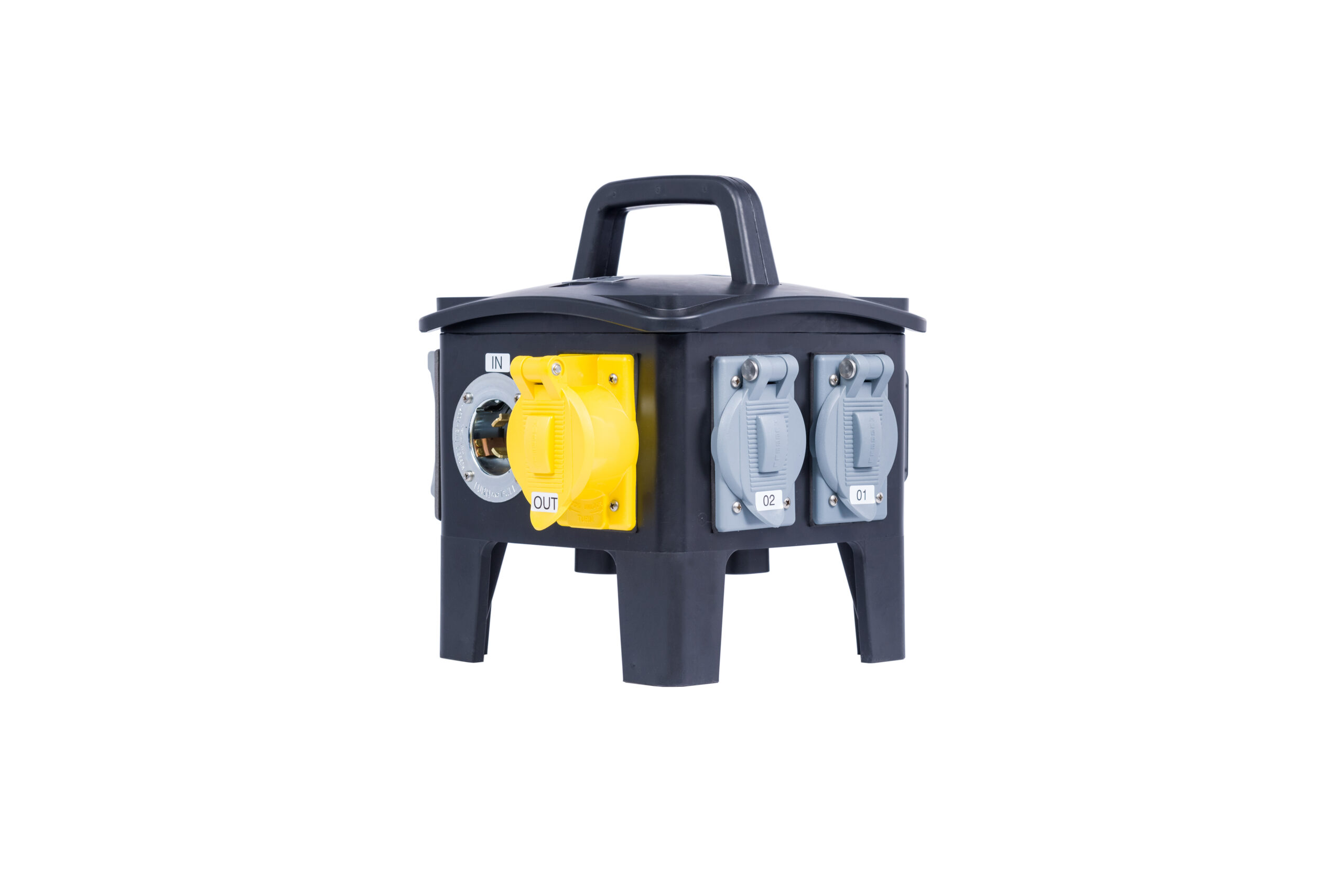Regardless of the size or scope of your construction project, there is no question that construction site electricity is a necessity. You have likely experienced at least one project that took place in a remote setting with no access to permanent electrical infrastructure. Odds are your project relied on a temporary power system to supply your tools and heavy machinery with power.
In order to shed a bit more light on the role that temporary power plays on a commercial construction site, let’s take some time to picture how it works. In simple terms, a temporary power system is a network of electrical equipment that is designed to generate and safely transport electricity that will be used to power downstream equipment. These power setups include either a gas or diesel generator, various power distribution units, cable assemblies, and specialized connectors.
The Role of Power Distribution Units in Construction Site Electricity
Power distribution units form the foundation of construction site electricity by safely dispersing power. You can think of power distribution units as a housing that safely hold internal components, such as busbars, wires, circuit breakers, connectors, and so on. While each unit serves a unique purpose in a power system, they are generally used to either support your generator in creating electricity or to gate-keep the flow of electricity throughout your power system.
Equipment such as our Generator Docking Station (GDS) and Load Bank Station (LBS) are shining examples of how a power distribution unit can be used to support your generator. As you may have guessed, a GDS is designed to ensure that your generator is properly installed and ready to supply power. Our GDS is fitted with Male Series 16 Camlocks that allow you to quickly connect your generator and carry the power it creates into the GDS before feeding downstream equipment. On the flip side, our LBS uses Female Series 16 Camlocks to carry power away from its enclosure. Because of this, it’s frequently used to help test a temporary power system’s ability to generate and carry the load that it’s rated for.
Our Dual Voltage TruOne Automatic Transfer Switch (ATS) and Quick Connect Switch (QCS) illustrate how a power distribution unit can be used to monitor and control the flow of electricity. Both units have switching capabilities that can interrupt and/or redirect the path of electrical current.
A transfer switch is responsible for transferring your system from electrical Source 1 to electrical Source 2 when a power outage occurs. That is, when your main power source is working at normal capacity, your ATS lies dormant and allows electricity to flow freely. However, as soon as your main power source begins to fail, sensors in the automatic transfer switch detect the decreased power output and opens the circuit between your power system and the utility source. This prevents back feeding, or electricity created by your generator flowing into the utility grid and causing dangerous fluctuations and voltage levels. Finally, your ATS sends a signal that kicks your generator into gear.
A temporary power system is never complete without a way to de-energize circuits in case of an emergency. With a quick turn of our Quick Connect Switch’s easy-grip rotary handle, its switching mechanism allows the user to open and close circuits. This way, you can shut off your gear immediately in case of an emergency. As an additional safety precaution, our QCS has a lockable door that is designed to never open until all circuits have been de-energized. You can enjoy peace of mind knowing that your team is safeguarded against accidental exposure to live wires.
Our small, yet mighty Beetle Box is a type of compact Spider Box that pairs well with 50A California Style Spider Box Locking Cables to provide you with the construction site temporary power that you’re looking for. Each of these power distribution boxes (PDU) are incredibly lightweight and stackable, which makes them perfect for transporting around the jobsite. We offer Beetle Boxes in three variations that are rated for 125/250V to meet your needs and personal preferences:

- BB-101 – Input: 50A Inlet CS6375, Output: (1) 50A CS6369, (6) 20A Duplex GFCI Receptacles
- BB-102 – Input: 50A Inlet CS6375, Output: (1) 50A CS6369, (2) 30A L6-30R, (3) 20A Duplex GFCI Receptacles
- BB-201 – Input: S16 Camlock Black, Red, Blue, White, Green, Output: (5) 50A CS6369
How Cables and Connectors Support Construction Site Electricity
While your generator and power distribution units do the heavy lifting, cable assemblies and connectors bridge the gap between pieces of equipment so that your temporary power system can work as one cohesive unit. Cable assemblies, such as our Type W Pigtails and Type W Extensions are used to provide quick and secure generator connections. Each of our generator feeder cables is made with top-grade materials such as flexible copper conductors and a sturdy cable jacket for performance you can count on.
Electrical connectors make sure that each cable and piece of power distribution equipment is connected securely and ready to provide you with plenty of construction site electricity. However, our team recognizes that even a single broken wire connector can mean major setbacks for you and your team. Luckily, by paying our Emergency Replacement Parts page a quick visit, you can quickly find the raw cable, connectors, and camlock covers you need to get your project back on track right away. All of these items are in stock and ready to ship.
If you have any questions about this article or would like assistance powering your next project, please get in touch with us by emailing [email protected]. Each member of our team has years of experience working to provide you with the construction site power you need to succeed at each project. In addition, we are proud to keep our inventory filled with power solutions to provide you with budget-friendly prices and conveniently quick lead times.
